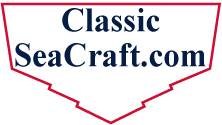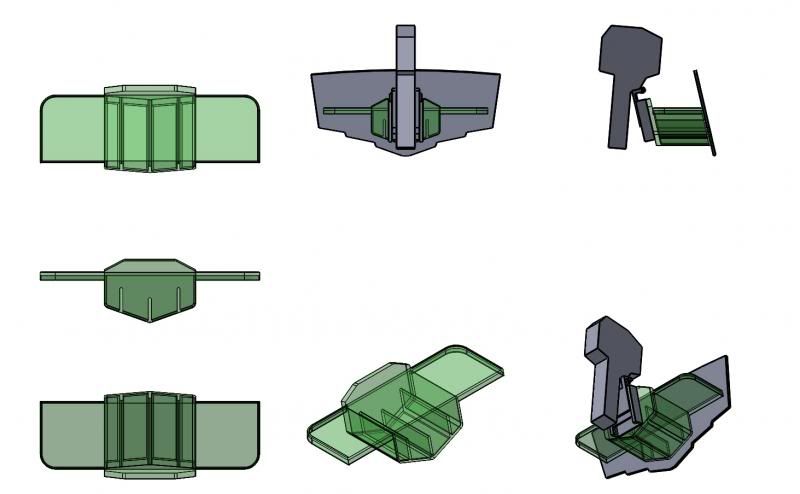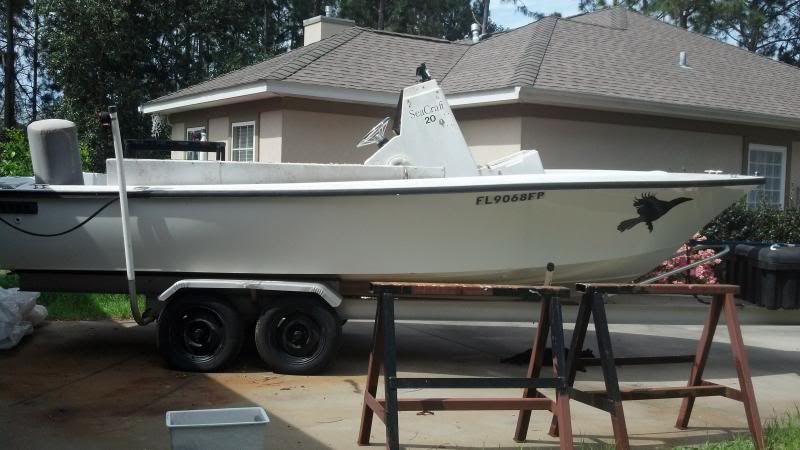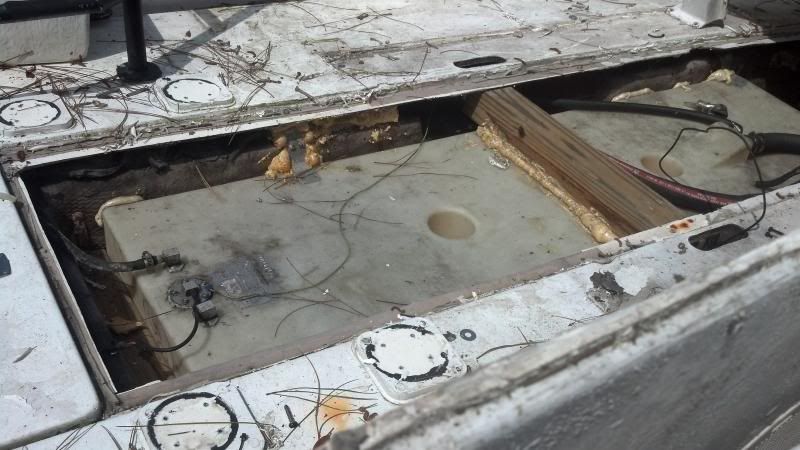
 |
|
#11
|
|||
|
|||
|
I just installed a 200 merc with no prop, at the propgods recommendation I for a quicksilver 15.5 x 17p I haven't got to run it yet
|
|
#12
|
|||
|
|||
|
Let me know how that setup runs.
|
|
#13
|
|||
|
|||
|
Nice rig.. Im in island view estates area in kingspoint. Would lie to check your boat your boat out
|
|
#14
|
|||
|
|||
|
I'm about to start the transom project. I wanna bounce my plan off of you guys to make sure I'm not doing something silly.
First off, I'm going from the outside because I perceive it to be easier than cutting through all of the boxes and such on the inside and I'm hesitant to pull off the cap for fear of opening a can of worms that needs to stay shut for a few more seasons. Phase 1: -Cut about 3 inches (1/4" skin at 1:12 scarf sound right?) from the outer perimeter of the transom. -Remove rotten wood, prep inner glass surface for bonding. -Measure and decide what thickness foam to order. -Trim Coosa Bluewater 26 foam to fit. -Drill holes to allow for air to escape and insertion of lag bolts to squeeze it all together. -US Composites Thin, Slow 635 Resin thickened to mayo consistency and slathered on Coosa and inner skin. -Bolt together and let it setup. Phase 2 -Prep outer skin and Coosa surface and coat with thickened epoxy as before. -Use long, stiff boards to ensure outer skin is flush with the remainder of the transom and bolt it all together, remove squirted out epoxy and let it set. Phase 3 -Prep skin scarf for VINYL ESTER fiberglass repair, build up per standard procedure and let set. -Sand/fill/fair with color matched gelcoat. (I think I need to use a wax free ester for the last glass layup to allow for the gelcoat to stick?) Phase 4 -Overdrill holes/fill/redrill for engine mounts, scuppers, etc. (maybe do predrill ahead of time to make things easier?) Phase 5 -Catch fish. Thoughts and advice much appreciated. |
|
#15
|
|||
|
|||
|
I would grind about 10-12" around the stern quarters and wrap glass around the quaters.i think it will give you a stronger transome. 1.5" coosa is pretty strong stuff.. Good luck and hope all goes well. I regretted cutting my outer skin... Although i had two on my 20 cause the transom was so rotted that the glass had sagged and buckled which left me with a bad layup... Good luck
|
|
#16
|
|||
|
|||
|
I don't think you should overdrill holes. You should use a large doubler that is thick enough not to bend. A piece of 3/16" or thicker aluminum 3 or more inches in diameter as a washer is a good start. Overdrilling and filling doesn't get rid of the stress concentration of a motor mounting hole. But a large thick washer does. Or the C-channel I mentioned. (which I wholeheartedly recommend) It will also reduce the compressive stress on the coosa and make the whole thing much more durable.
You should use unwaxed resin all the way thru unless it is your last coat of gel coat. If you have more than 16 hours between coats, put down a layer of peel ply. Then you just peel it off next time you work on the boat. No sanding needed. Sandblast the transom before you cut into it rather than sanding. But first acetone wash it. Then grind in your taper with a disk sander, then wash again with acetone. Then cut into it. Sandblast the interior of the transom after the wood is gone. It is fast and it gets into every corner. Then vacuum and water wash and vacuum and acetone wash. Personally, I don't like epoxy. But I can't say it won't stick. Although you might check to see if the vinylester will stick to it, else you will need to make sure very little (just the saw kerf on the outer skin) comes in contact with the outer layer of vinylester and glass. A test batch will tell you this. Some vinylesters will stick to epoxy well. Also, if you can make mega C-clamps like flyingfrizzle to clamp your transom, that's better than drilling lag bolt holes, obviously. Those are my suggestions. |
|
#17
|
|||
|
|||
|
Quote:
http://www.homedepot.com/p/QEP-1-4-i...0113/100192636 It will give you an even distribution of thickened epoxy that will squish down (technical term) nicely to give a uniform bond coat. Quote:
Good luck with your project, Dave
__________________
Blue Heron Boat Works Reinventing the wheel, one spoke at a time. |
|
#18
|
|||
|
|||
|
Thanks for the replies.
Down the road I want to close in the transom and put on a bracket. Any thoughts/concerns on this design? -2" motor mount (Coosa bluewater 26 1.5" + .25" 1708 w/ epoxy on each side) -.25" skin on floatation chamber -3 1"x8" structural members made of (Coosa Perhaps) w/ 1/8" skin -Deck cored with Divinycell in three places like Strick's -Deck joined to flotation box with adhesive at junction and tabbed in on the outside underneath. -Access port on the deck w/ rigging coming through as well. -I intend to isolate the floatation chamber from the bilge but still have drainage holes in the spars and a garboard plug. Still some details to hash out.  I envision making a mold for the deck and a mold for the box. Vacuum bagging the two and joining them after cure. |
|
#19
|
|||
|
|||
|
At first glance, that looks good to me. I did some FEA on one a while back, and the deep rib in the bottom helps lots.
It is here: http://www.classicseacraft.com/commu...t=23274&page=4 I could never figure a good way to get the swim platform well connected to the tub, though. Others who have glass brackets had some good observations in there, too. I suspect that tabbing at the crown of the rib is a PITA with epoxy. Mat glass has a bad rap, but it wets out in poly and vinylester(epoxy) and goes around compound curves. It doesn't wet out the same in epoxy (it stays stuck together when there is not styrene in the resin). I have a hard time with 1708 on compound curves. Others might have tips for this. I would just use mat in VE/PE, and a fair amount of it for tabbing the top of the rib to the ends of the bracket. But I haven't actually built one. Others have. They might have good advice (and maybe I can learn something from them with 1708 for compound curves). |
|
#20
|
|||
|
|||
|
I'm still debating how I'm going to go about the transom fix. To get a better look of what was under the deck, I unscrewed the CC and gas tank cover. The guy before me replaced the tank and hoses but used a quite a bit of junk from Lowes (treated 4x4s, great stuff, zinc plated shelf brackets and screws, and to round it out, a door mat under the tank).
The deck seems surprisingly solid considering all of the holes from the CC and the two holes for wiring chases that have exposed the core. I'm surprised how light they made the CC. I thought it'd be a good place to cut down some weight while I'm in there sectioning out 6 or so inches but it uses less plywood core than I expected.   
|
 |
| Tags |
| 175, 20sf, optimax |
|
|